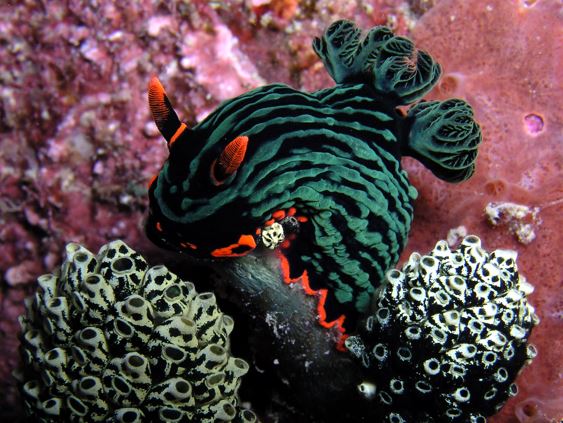In the depths of the ocean, one of the most diverse ecosystems on the planet exists: the “submarine Amazon”. This is how they call the coral triangle, which encompasses waters from Malaysia, the Philippines, Indonesia, Papua New Guinea, East Timor, and the Solomon Islands.
In this marine habitat, there is an impressive variety of marine life that has endured for millions of years.
Two scientists came across a discovery over a decade ago that opens a window to the past and future of the marine world. The paleontologist Ken Johnson and the marine biologist Nadia Santodomingo revealed a collection of fossilized corals (which are now in an office at the Natural History Museum in London), some of them over 30 million years old.
### Submarine Amazon: this was the research

Both, in collaboration with the Geological Agency of Indonesia, extracted eight tons of rock containing more than 200 species of coral.
Their research aims to understand how these corals have resisted extreme climate and environmental changes throughout history.
“It is fascinating to see that many of the coral species that existed millions of years ago are still here today, resisting time and adversity,” Santodomingo said in statements to the BBC.
### Submarine Amazon: 75% of all coral species live here
The coral triangle is home to 75% of all known coral species, as well as 3000 species of reef fish and six of the world’s seven sea turtle species.
This region acts as an “underwater city” where small marine animals, known as polyps, build coral structures that other creatures colonize.
“Corals are like the foundations of buildings in a city,” explains Santodomingo. “They are shelters, hunting grounds, and breeding grounds for many species,” she adds.
When the polyps die, their skeletons remain as empty homes where sponges, clams, and other organisms find shelter and space to live, making these reefs a fundamental pillar for marine biodiversity.
Unlike other reefs in the world, the coral triangle did not suffer mass extinctions, allowing its diversity to persist. This sets it apart from what happens in other parts of the planet, such as in the Caribbean, where climatic events have caused species extinction millions of years ago.
“The murky water in this region seems to play a protective role, helping corals resist bleaching, a phenomenon in which they lose their color and, therefore, their resilience, by expelling the algae that live in symbiosis with them,” the scientists elaborated.
### Changes in biodiversity
Recent research has shown that corals growing in turbid waters, as in this case, are less likely to bleach during heatwaves.
A 2020 study showed that only 10% of corals in turbid waters bleached, compared to 37% in clear waters. This “protection” effect is due, according to scientists, to the turbidity reducing exposure to intense light, which decreases thermal stress on corals.
However, these environments are threatened by plastic pollution and other waste from human activities nearby.
“Human activity puts additional pressure on these resilient habitats,” warns Johnson. The researchers proposed urgent measures, such as “creating marine protected areas in the coral triangle.”
In this way, they aim to save these unique ecosystems and allow them to continue being a refuge for life in a context of climate change.

As clear-water reefs around the world continue to decline, researchers point out that these turbid reefs could offer a kind of sanctuary for marine species that would otherwise face extinction.
With modern technology, Johnson and his team also explored fossils collected decades ago in the museum, using computed tomography and other advanced techniques to analyze their structures without damaging them, opening new avenues of research on the resilience of these corals.
**[Do you already know our YouTube channel? Subscribe!](https://www.youtube.com/channel/UCrYLIWysAyv4m833zGAQ02g)**

